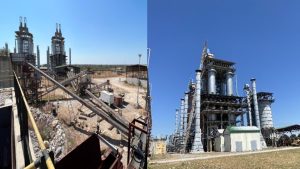From the moment the first tidal turbine blades sliced through the Pentland Firth’s currents, a silent question hovered over the world’s largest tidal array: could its mechanical heart endure the relentless ebb and flow of the sea? Six years on, that question has been answered with a resolute demonstration of engineering tenacity. At the MeyGen project, powerful currents have kept turbines turning without a single unscheduled stop, not through luck but by design. Behind this uninterrupted run lies a partnership of innovation and materials science that has slyly rewritten expectations about the longevity of marine energy assets.
Investors eyeing tidal power have often balked at the perceived maintenance burdens that come with submerged machinery assaulted by saltwater and shifting sands. Yet, in the Pentland Firth, turbines have clocked more than 50,000 operating hours without a major intervention, forging a compelling case for the reliability of this nascent renewable sector. At the core of this achievement sits a suite of bearings and seals engineered to shrug off corrosion, fatigue and the minute irregularities of underwater motion. This unheralded layer of technological assurance has transformed what was once a speculative proposition into a tangible example of long-term operational resilience.
The MeyGen array itself reads like a milestone in marine energy history. Anchored on the seabed off Scotland’s northern tip, its four initial turbines have defied sceptics by racking up cumulative availability figures that many offshore wind installations would envy. More recently, the project extended its own record, surpassing six continuous years of power generation, a testament to the careful calibration of every moving part. These turbines now represent the beating heart of a larger vision: an expandable grid of subsea generators that can deliver predictable, rhythmic power in phase with lunar cycles.
Such stability matters profoundly to investors who prize certainty in revenue streams. Unlike solar farms that falter on overcast days or wind parks that grind to a halt in calm weather, tidal installations offer a near-clockwork predictability. Yet until now, many financiers have hesitated, concerned that the unseen struggle of underwater bearings would precipitate costly repairs and downtime. By contrast, the MeyGen array has turned a six-year marathon of uninterrupted operation into a powerful endorsement of robust design. It underlines the proposition that with the right components, tidal turbines can offer the dual advantage of reliable baseload supply and minimal lifecycle maintenance.
Behind the scenes, rigorous testing and materials selection have been decisive. Engineers subjected bearing prototypes to accelerated wear cycles, high-pressure saltwater baths and perfectly uneven load distributions to simulate years of real-world stress in mere months. Advanced coatings and specialised lubricants formed a protective film impervious to seawater ingestion, while precision machining kept tolerances so tight that even the slightest deformation became practically impossible. These innovations have not only extended component life but also delivered performance consistency, ensuring that power output remains remarkably steady over time.
The significance of MeyGen’s new operational benchmark extends well beyond a single project. It signals to the wider marine energy industry that tidal power can be more than a niche experiment; it can be a dependable pillar within a diversified renewable portfolio. For investors assessing long-term infrastructure, the implication is clear: tidal energy, once relegated to the fringes, is primed for expansion, to larger arrays, deeper waters and different geographic settings where strong currents prevail.
This shift in perception arrives at a moment when capital allocation across renewable technologies has become fiercely competitive. Solar and wind have enjoyed decades of cost declines and technology improvements, while tidal energy has often rated a cautious ‘maybe’ in strategic planning discussions. But with the MeyGen array’s record run, underpinned by cutting-edge bearing solutions, investors now have a concrete case study in which both predictable generation and resilient engineering converge. It points to a future in which subsea turbines could anchor coastal grids with unmatched reliability.
In this evolving landscape, companies that supply critical mechanical components stand to gain particular attention. As developers seek to replicate the MeyGen model elsewhere, they will look for proven suppliers whose products have already endured the sea’s most punishing tests. Such partners will not merely sell parts; they will offer a track record of performance that underwrites the viability of entire tidal schemes. That level of assurance can tilt investment decisions, turning what was once a high-risk proposition into a calculable, long-horizon opportunity.
SAE Renewables Limited (LON:SAE) was founded in 2005 as a supplier of tidal stream turbines, SAE quickly grew to include development of tidal stream projects and is the majority owner of MeyGen, the world’s largest tidal stream energy project. a hub for clean energy storage, SAE exemplifies innovative reuse of industrial sites for modern needs.











































